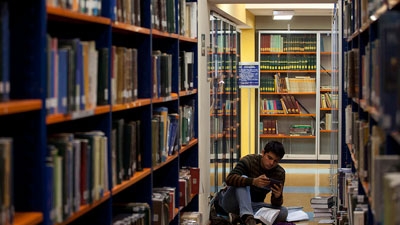Do you believe you are in a better situation today than your parents were? This quick reference to generational progress, in which increased access to quality education, health and employment are decisive, is called into question after a decade of record growth in Latin America.
Technological advances and an increasingly connected world have opened the doors to new opportunities for Latin Americans. But are the region’s youth better positioned to move forward than their parents or grandparents were?
A World Bank study found that equal access to goods and services for young people has improved in recent years, but “serious issues” remain with respect to the quality of those goods and services, particularly in education and housing infrastructure. The study’s authors expressed concern that the social advances in the region – a reduction in poverty and an expanding middle class – will stagnate in light of slower economic growth. After a GDP per capita annual growth rate of 4.3% in 2010, this rate is expected to decline to 1.7% in 2014.
The study Social gains in the balance found that access to these goods and services – which are essential for the future success of an individual – is directly proportional to parents’ education and income levels. For Latin American youth, the social status of their parents plays a key role in determining their access to a quality education, health care and even basic services such as water and sanitation. As a result, although 73 million Latin Americans have escaped poverty over the past decade, intergenerational mobility remains limited.
“The paradox is that with more education, my situation is more precarious and uncertain than that of my parents,” complained Xochitl Meseguer from Mexico. “As far as I know, my parents lived better than now,” agreed Daniel Armando Villalobos, another young Mexican, during a recent Facebook chat.
For others, such as Peruvian Erica Merino, the “only progress” with respect to her parents’ generation is “technological.”
The scenario varies across the region. The Southern Cone and Andean countries, for example, have more successfully narrowed the gap in equal access than have Central American countries, which have made only modest gains, according to the report.
The social gap
From a global perspective, Latin America has made huge advances in reducing poverty during the first decade of the 21st century, in part due to its solid economic growth. Extreme poverty as measured by the global standard of $1.25 per capita per day has fallen in the region nearly as fast as in East Asia, which is well known for its dramatic declines. Yet Latin America remains one of the world’s most unequal regions.
A growing middle class has made these inequalities even more evident, according to experts. Dissatisfaction with the quality of public services in the region has led to the increased use of private services, particularly in education and health care. This exodus from public services has a significant impact on lower-income segments of the population, however.
Education quality is of particular concern. For example, math and science scores for Latin American students are substantially lower than those of students from OECD countries in the OECD’s PISA program (42% versus 73%) standardized tests.
The quality of education has important implications for economic growth.
Quality early education is essential for both economic and social success as an adult. Despite increased public spending on education throughout the region, the study reports that private school students consistently outperform their public school peers on standardized tests. This not only limits their short-term employment opportunities; it also threatens the region’s future competitiveness.
“Recent research provides compelling evidence that Latin America’s low levels of human capital attributable to low-quality schooling may explain more than half of the growth gap between the region and the rest of the world,” according to the report.
And it does not take much to reveal a clear gap between rich and poor.
Access to water and sanitation varies significantly across the region. Despite having vast freshwater resources, Brazil ranks 23rd in the world with respect to availability of drinking water. At the regional level, 100 million Latin Americans lack access to adequate sanitation.
“The low figures are of particular concern given that water and sanitation influence health and other important childhood opportunities, such as not missing school days due to preventable illnesses,” according the report.

